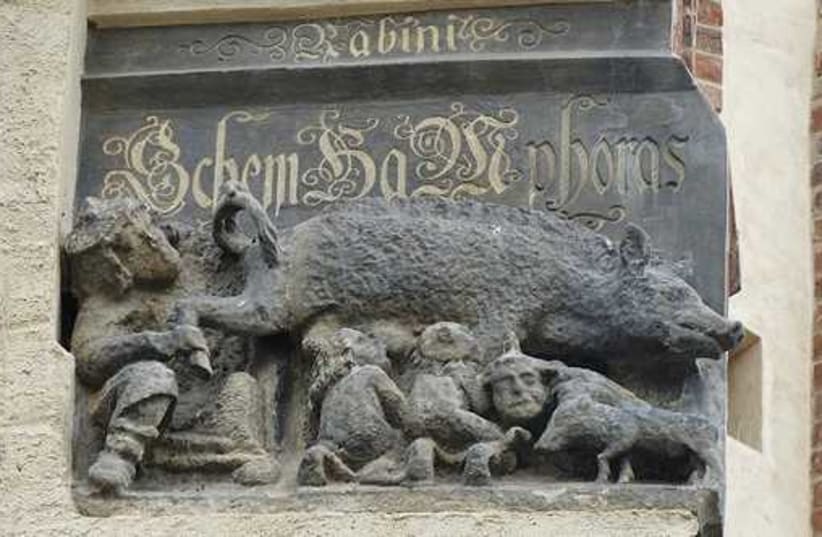Germany's top court ruled on Tuesday that a medieval antisemitic sculpture can stay on the facade of a church in the eastern town of Wittenberg, rejecting an appeal by a Jewish plaintiff who has for years argued it is an insult to all Jews.
The 13th century "Judensau" or "Jew Sow" on the town church depicts a caricature of a rabbi lifting the tail of a sow and two Jewish children suckle on the teats. Pigs are considered unclean in Judaism.
At a time when politicians are warning about rising antisemitism in Germany, the ruling is a reminder of widespread anti-Jewish sentiment in the Middle Ages.
The battle to remove the statue
The plaintiff has been waging a court battle since 2018 to have the sculpture removed.
However, the Federal Court of Justice, the country's top appeals court, upheld rulings from lower courts which dismissed the case, saying there was currently no infringement which would be needed to uphold such a claim.
"(The court).. has decided that the sandstone relief attached to the outer façade of the Wittenberg Town Church - the "Wittenberg sow" - does not have to be removed."
German Federal Court of Justice
The Wittenberg stone carving is one of about two dozen similar sculptures from the Middle Ages that still feature on churches around Germany and elsewhere in Europe.
In 2020, the Higher Regional Court in Naumburg ruled that displaying the "Judensau," which is 4 meters from the ground did not constitute an offence.
The church has said in the past that in 1988, in consultation with the Jewish community, it created a site of remembrance incorporating the sculpture, a plaque on the ground beneath remembering the six million Jews who perished in the Holocaust, and an information board.
Wittenberg was also the town where Martin Luther is said to have nailed his theses challenging Catholicism to a church door in 1517 which led to the Protestant Reformation in Germany.

